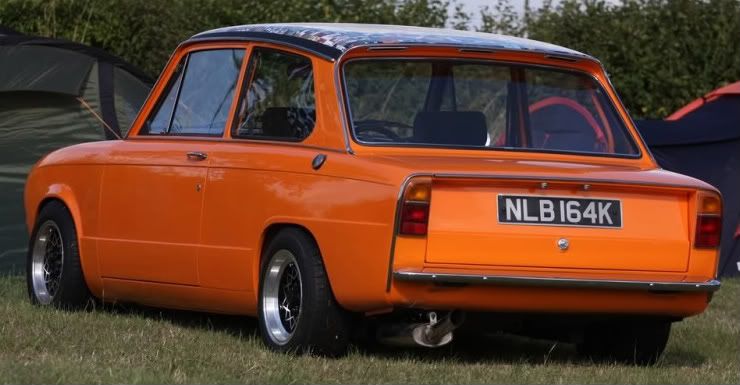GSM - or Glassport Motor Company was a South African car manufacturer. They very nearly missed being SAs first sports car manufacturer... The Cape Town based company build fibreglass bodied sports cars between 1958 and 1964. The founders of GSM stumbled upon fibreglass on a trip to England. GRP was a whole new technology back then. And was promptly adopted by the founders - and offered great advantages for a smal buisness.
The first car they build was a smal roadster, the Dart. However, I'm not going to tell you about the Dart. I'm going to tell you about the second car they build; the Flamingo. A smal, light and beautifull coupé.
The Flamingo ('62 on) was intended to be fitted with a Ford V6 - which was not ready by the time the Flamingo was introduced. Instead, the Flamingo got the 1.7l engine out of a Taunus; later the 1.5 of a Cortina (non-crossflow). Whilst the Dart had a transverse leaf spring on the front, the Flamingo got a double wishbone front suspension. At first with Mini rubber cones, later with conventional coil springs. The rear suspension used to differing triling arms to help with traction, respectively prevent one wheel from spinning faster under full power.
It's said that - for it's time, it was way ahead in terms of handling, aerodynamics and roadholding. And of course they went racing with it. Successfully.






The Dart... I'm going to post another thread about it soon.
The first car they build was a smal roadster, the Dart. However, I'm not going to tell you about the Dart. I'm going to tell you about the second car they build; the Flamingo. A smal, light and beautifull coupé.
The Flamingo ('62 on) was intended to be fitted with a Ford V6 - which was not ready by the time the Flamingo was introduced. Instead, the Flamingo got the 1.7l engine out of a Taunus; later the 1.5 of a Cortina (non-crossflow). Whilst the Dart had a transverse leaf spring on the front, the Flamingo got a double wishbone front suspension. At first with Mini rubber cones, later with conventional coil springs. The rear suspension used to differing triling arms to help with traction, respectively prevent one wheel from spinning faster under full power.
It's said that - for it's time, it was way ahead in terms of handling, aerodynamics and roadholding. And of course they went racing with it. Successfully.






The Dart... I'm going to post another thread about it soon.













